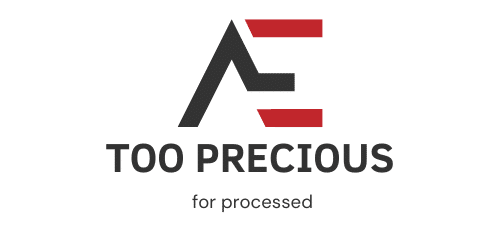How to Manage and Train a Dog with a Strong Prey Drive in a Multi-Pet Household?

Living harmoniously in a multi-pet household can be a challenge, especially when one of your pets has a natural instinct to hunt. Dog breeds with a high prey drive can be a cause of concern, as their instinctive urges may pose a risk to other household pets. However, with the correct approach and consistent training, you can manage and rechannel your dog’s prey drive to ensure a peaceful co-existence in a multi-pet household.
Understanding Your Dog’s Prey Drive
Before diving into the training and management strategies, it’s important to understand what a prey drive is. Dogs, by nature, are carnivorous predators. This instinctive behavior, known as the prey drive, is an inherent trait in many breeds.
Cela peut vous intéresser : What Are the Essential Dietary Supplements for a Growing Giant Breed Puppy?
This prey drive is not necessarily a sign of aggression. It’s rather an instinctive behavior that is triggered by movement, noise, or the scent of other animals. Dogs with a strong prey drive are often energetic, focused, and enjoy games that simulate a hunt.
However, in a multi-pet household, a dog’s prey drive can be problematic. It could lead your dog to chase, and potentially harm, other pets in the house. Understanding your dog’s prey drive is the first step in managing it effectively.
Avez-vous vu cela : What Are the Signs of Stress in a Pet Snake and How to Create a Calming Habitat?
Selecting the Right Breed
Choosing the right breed is key in a multi-pet household. Certain breeds, such as terriers, hounds, and retrievers, have a higher prey drive due to their historical roles as hunters.
If you already have small pets and are considering adding a dog to your family, you might want to avoid breeds with a high prey drive. On the other hand, if you already have a dog with a high prey drive, understanding your dog’s breed and its natural instincts can help you manage its behavior effectively.
Training Your Dog to Control its Prey Drive
Training is a crucial step in managing your dog’s prey drive. This is not about completely suppressing your dog’s natural instincts, but rather teaching them to control these instincts.
Positive reinforcement training is highly effective in this regard. Reward your dog when it exhibits control in the presence of its triggers. Use treats, praise, or their favorite toy as rewards.
You can also use the ‘leave it’ command to train your dog. Start by presenting a less desirable item to your dog and say ‘leave it.’ Once your dog moves away from the item, reward them. Gradually, you can start using this command with more enticing items, and eventually with other pets in the household.
Implementing Management Strategies in Your Multi-Pet Household
Training alone is not enough to manage a dog with a high prey drive. Implementing management strategies in your household is equally important.
Separate your pets when you’re not around to supervise them. This is especially important in the initial stages, when your dog is still learning to control its instincts.
Provide your dog with adequate mental and physical stimulation. A bored dog is more likely to engage in chase behavior. Regular exercise and interactive toys can help keep your dog occupied.
Incorporating Prey Drive into Your Dog’s Playtime
One effective way to manage your dog’s prey drive is to channel it into structured playtime. This can help satisfy their instinctive need to hunt, chase, and capture, without putting other pets at risk.
You can use toys that move or make noise to simulate prey. Games like fetch, tug-of-war, or flirt pole can meet your dog’s need for chasing and capturing. Just make sure the play sessions are controlled and safe.
In conclusion, managing and training a dog with a strong prey drive in a multi-pet household involves understanding their instincts, training them to control these instincts, implementing management strategies, and channeling their prey drive into structured playtime. It may seem like a daunting task, but with patience, consistency, and the right approach, it is entirely possible to maintain a harmonious multi-pet household.
Utilizing Positive Reinforcement in Prey Drive Training
Applying a positive reinforcement training approach to manage your dog’s prey drive can yield fruitful results. This method of training revolves around the idea of rewarding your dog for behaviors you want to encourage. For instance, if your dog refrains from chasing the family cat, you could reward them with a treat, praise, or their favorite toy.
Begin by identifying your dog’s triggers, which can be anything from specific sounds to certain movements. Once you’ve identified these triggers, you can start rewarding your dog every time they observe the trigger but choose not to act on it. The aim is to accustom your dog to these triggers while rewarding them for their restraint. The ‘leave it’ command can also be immensely beneficial.
To teach the ‘leave it’ command, start with an unattractive toy. Ask your dog to ‘leave it’ and once they comply, reward them. Gradually, you can introduce more exciting toys, until finally, the command can be used to prevent them from chasing other family pets.
Throughout the training process, it’s important to consistently reward your dog for their good behavior. This encourages the positive habits of restraint and impulse control in your dog, making it easier to manage their prey drive.
Maintaining a Harmonious Household through Effective Management Strategies
In addition to training, it’s essential to employ management strategies inside your home to ensure the safety and harmony of all your pets. One straightforward strategy is to separate your pets when you’re not present to supervise them. This is particularly crucial in the early stages of the training process when your dog is still learning to control their impulses.
In addition to separation, providing your dog with sufficient mental and physical stimulation is key. Engaging toys, regular walks, and sufficient playtime can help keep your high prey drive dog occupied. A well-stimulated dog is less likely to give in to their predatory aggression, making it easier for cats, dogs, and other pets to coexist peacefully.
Remember, dogs with a high prey drive are energetic and focused. They require activities that allow them to burn off their energy. Incorporating their prey drive into structured playtimes, such as fetch or tug-of-war, can be beneficial. These activities not only help your dog expend their energy but can also satisfy their need to chase and capture, without causing harm to other pets.
Conclusive Remarks
In summary, managing and training a dog with a high prey drive in a multi-pet household can be a challenging task, but it’s certainly not impossible. It involves understanding your dog’s instinctive prey drive, teaching them to control these instincts via positive reinforcement, and implementing effective management strategies to ensure the safety of all pets in the household.
Incorporating your dog’s prey drive into structured playtime can also provide an outlet for these natural instincts, reducing their need to chase other pets. The process may require patience and consistency, but with time and dedication, you can succeed in creating a harmonious multi-pet household where all your family members, including your high prey drive dogs, coexist peacefully.
